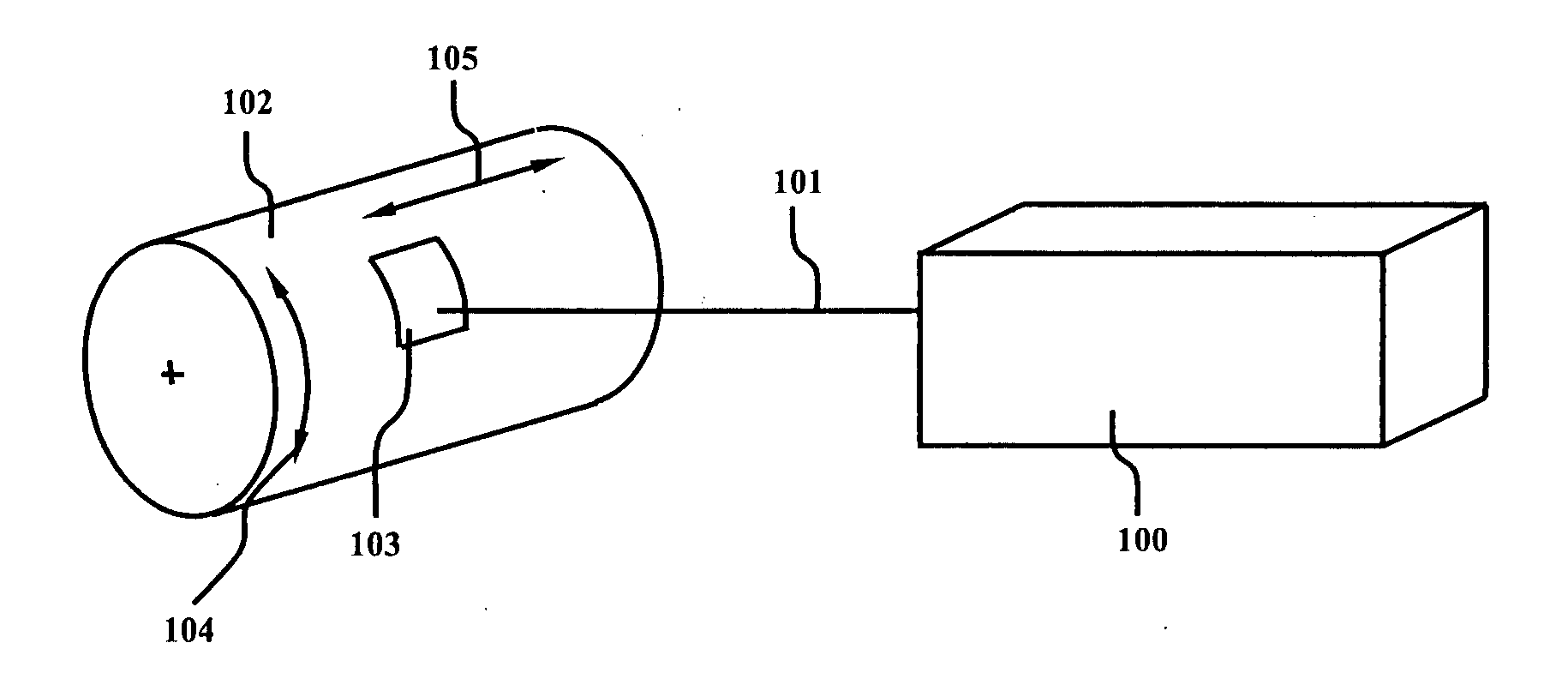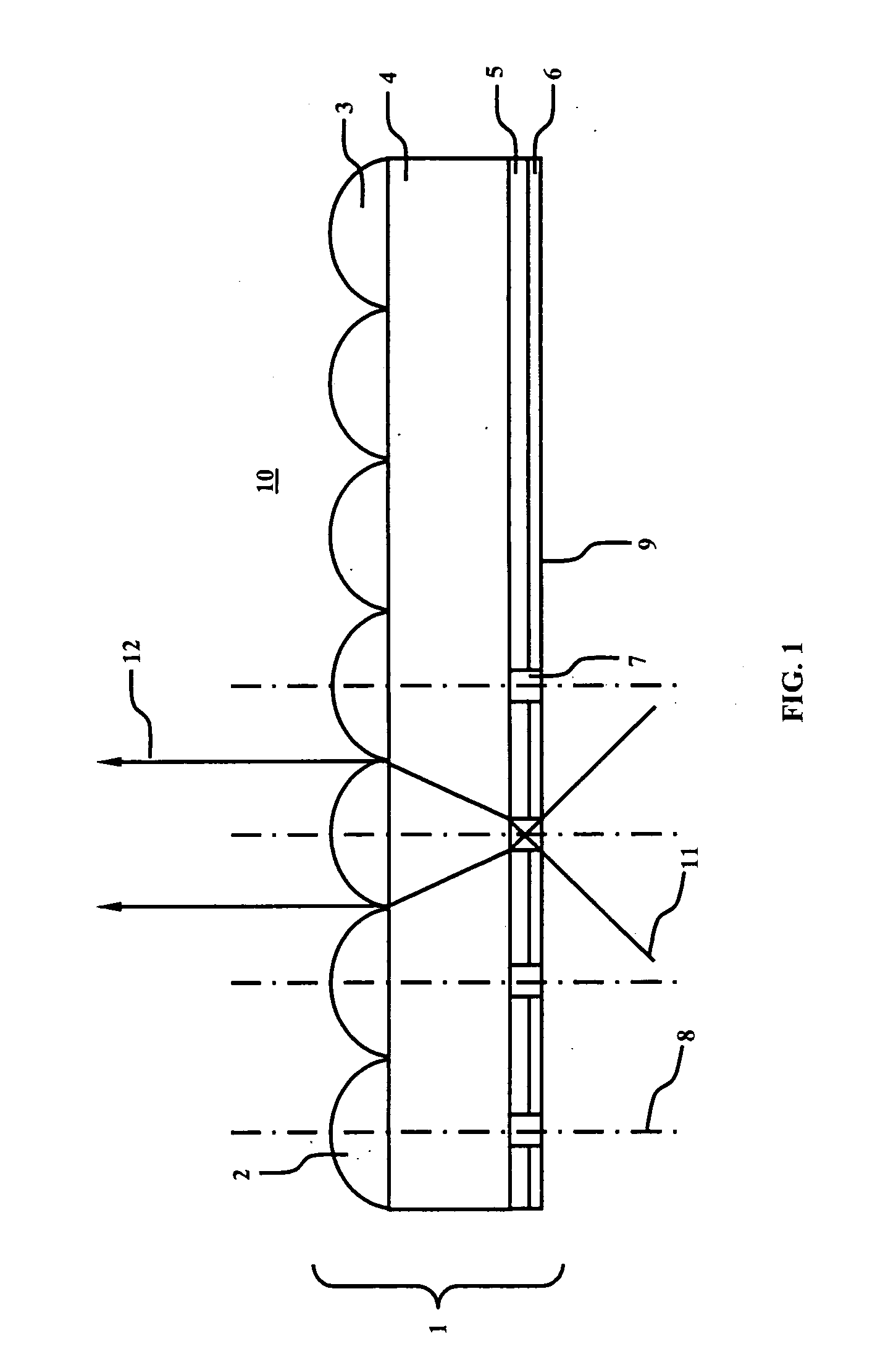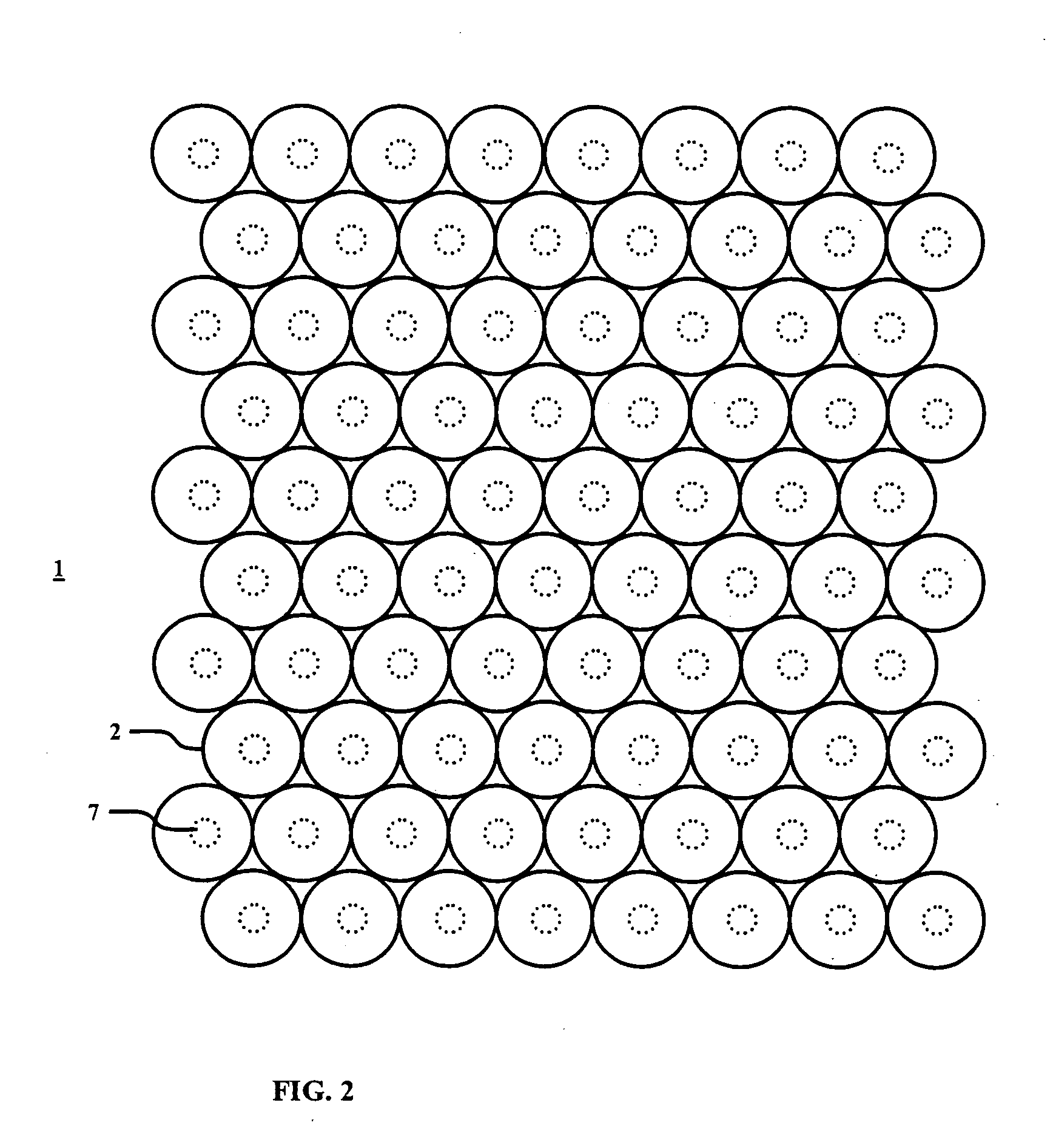Method and apparatus for aperture sculpting in a microlens array film
a technology of array film and aperture sculpting, which is applied in the direction of instruments, static indicating devices, lenses, etc., can solve the problems of difficult manufacturing of microlens collimating film, apertures that are a few microns in diameter, and the shape of the emission envelope cannot be tailored or modified to suit the desired shape of the intended backlight application, etc., to achieve high output luminance, easy manufacturing, and high lumen efficiency
- Summary
- Abstract
- Description
- Claims
- Application Information
AI Technical Summary
Benefits of technology
Problems solved by technology
Method used
Image
Examples
embodiment 3
f) (Embodiment 3) The number of metal deposition / ablation cycles can be between one and twenty.
[0075] Depending upon the laser ablation prescription, the surface of the substrate 4 at the aperture location 7 can have differing characteristics. For example, the laser ablation process can leave the substrate 4 surface unaffected, in which case the surface 40 of FIG. 8A is optically smooth and untextured. Alternately the laser ablation process can produce a textured surface finish 41, as shown in FIG. 8B. Lastly, a more aggressive laser ablation process can result in a substrate surface at the aperture that has optical power 42, as shown in FIG. 8C. Often the lensed surface 42 also has a texture superimposed on it.
[0076] Once the apertures 7 are completed, and regardless of the texture or shape of the substrate 4 at the aperture, the apertures 7 can then be filled or partially filled to provide another degree of control of the light entering the substrate 4 and subsequently leaving th...
PUM
 Login to View More
Login to View More Abstract
Description
Claims
Application Information
 Login to View More
Login to View More - R&D
- Intellectual Property
- Life Sciences
- Materials
- Tech Scout
- Unparalleled Data Quality
- Higher Quality Content
- 60% Fewer Hallucinations
Browse by: Latest US Patents, China's latest patents, Technical Efficacy Thesaurus, Application Domain, Technology Topic, Popular Technical Reports.
© 2025 PatSnap. All rights reserved.Legal|Privacy policy|Modern Slavery Act Transparency Statement|Sitemap|About US| Contact US: help@patsnap.com



